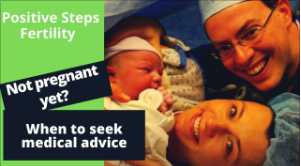Fertility can be affected by so many factors that it can be easy to get lost in all the conditions and terms that specialists use. Fibroids are just one of several potential causes of infertility in women.
A fibroid is a growth in the uterus. It can be as tiny as a pea or as large as a lemon, but most are three to four centimeters long. Fibroids grow in the uterus muscle and can cause symptoms like heavy menstrual bleeding, pelvic pain, and cramping during sex. Many women face this condition; some statistics estimate that up to 80% of women will develop fibroids by the age of 50.
Fibroids don’t always cause fertility problems, but if they do, it’s important to know what’s going on with your body so a specialist can get you the proper treatment.
What are fibroids and how do they affect fertility?
Fibroids are non-cancerous growths that develop in the uterus. They may be present at birth and discovered later, or they can develop during a woman’s reproductive years. There are many types of fibroids and some are benign (noncancerous), while others can be cancerous.
Fibroids can interfere with implantation by blocking the fallopian tubes or distorting the uterine cavity. This can make it difficult for a fertilized egg to attach to the uterine wall, leading to infertility. Additionally, hormonal imbalances caused by fibroids can lead to irregular menstrual cycles, making it harder for women to predict their fertile window and therefore increase the risk of infertility. If a woman has a large fibroid on her ovary, she may not be able to release an egg because it’s too big for her body to let go of it during ovulation.
A woman’s risk for developing fibroids tends to stop growing after menopause. As you get closer to menopause, your uterine fibroids may shrink and become less noticeable. For many, their fibroid-related symptoms go away completely. This decrease is because fibroids largely depend on estrogen, a hormone that stimulates the growth of uterine tissue. During a woman’s reproductive years, higher estrogen levels contribute to the development and growth of fibroids. However, after menopause, estrogen levels significantly drop, leading to a reduction in the size of existing fibroids and a lower likelihood of new fibroids forming. This hormonal change during menopause shifts the dynamics from tissue buildup, seen during pregnancy or puberty, to a state where there is less stimulation for the growth of the uterine lining and fibroids. This hormone supports healthy tissue growth in the uterus, so when levels drop after menopause, the tissue will begin to break down instead of build up as it does during pregnancy or puberty.
If you have had surgery for fibroids and have not been able to get pregnant after at least one year (or if you are “over” 35 and have not been able to get pregnant after six months of trying to conceive), you should talk with a specialist.
How do you test for fibroids?
If you think you might have fibroids, a fertility specialist may recommend a pelvic ultrasound. This painless test uses sound waves to create images of your reproductive organs. Your specialist can tell whether you have fibroids by looking at the picture of your uterus and ovaries on the monitor screen. The ultrasound can also check for other problems, such as endometriosis or ovarian cysts.
The Office on Women’s Health states that “having a family member with fibroids increases your risk.” If you have a family history of fibroids (or if other factors make them more likely), your specialist may recommend an MRI scan instead of an ultrasound because it gives more information about what’s going on inside the body than an x-ray or CT scan.
Additionally, hysteroscopy, combined with ultrasound, is considered the gold standard for examining intrauterine fibroids. This combination is particularly beneficial as hysteroscopy can confirm and complement the findings of the ultrasound, especially in cases where the ultrasound alone might not provide complete clarity. According to the American College of Obstetricians and Gynecologists, “Hysterosalpingography (HSG) is an X-ray procedure that is used to view the inside of the uterus and fallopian tubes. It often is used to see if the fallopian tubes are partly or fully blocked. It also can show if the inside of the uterus is of normal size and shape. All of these problems can lead to infertility and pregnancy problems.”
Treatments for fibroids
There are many treatment options for fibroids, including:
- Laser ablation. This is a procedure that uses light energy to destroy the fibroid tissue. It’s most often used for smaller uterine fibroids.
- Myomectomy. This is surgery to remove the myoma (fibroid tumor), which can be done through laparoscopic surgery or open abdominal surgery depending on its size and location within your uterus.
- Embolization (clotting agents injected into vessels supplying blood flow). This treatment has been shown to effectively eliminate blood supply to large fibroids but may require repeat procedures over time as new vessels grow back.
- Surgery that involves removing part or all of the uterus with surrounding tissue; however depending on how much tissue needs removal this could result in complications such as incontinence (loss of control over urine) or vaginal prolapse since there won’t be any support left behind once everything else has been removed.
To determine the right treatment plan for fibroids, you should consult a fertility specialist to carve out the best path to a successful pregnancy.
If you are concerned about developing fibroids or think you may already have them, you should consult a fertility specialist about taking measures to identify and treat this disorder. The truth is, though, fibroids are one facet of the much larger picture of your overall fertility.
So many factors contribute to your ability to conceive. Fibroids or not, if you are struggling with fertility or just have questions about conceiving, talking with a fertility specialist is the first step to getting the answers you need.
Don’t suffer in silence. Get answers. Get peace. Reach out to a specialist today.




